Colorado Trail, Desert Southwest (CO,AZ,UT,NM), Trip Reports » Colorado Trail 2010/2011
This is a lengthy account, so if readers want just the daily notes, skip to the Day __ descriptions. Otherwise, I just wanted to share my quest of (almost) completing the CTR route.
Over the past two summers I completed trips on the Colorado Trail. Since 2007, I had been seriously thinking about fulfilling a 10 year dream of riding the trail. Initially, in high school I wanted to hike the whole thing, but as the years went on I found it impossible to take the 30+ days off. I knew someone that had ridden the trail in about 3 weeks, but even that was too much time, and he broke many parts of his bike (a 1993 GT Tequesta used in a 1994 ride).
Then I heard about the Colorado Trail Race in the summer of 2007. These people were riding the whole thing in a week (or less)! It seemed extreme, and I was hooked. The many bicycle rack, bag, backpack, and gear combinations ensued. Many overnighters were spent burdened with too much gear, freezing with too little gear, and hungry because of forgotten gear. Other times I would sit around the house packing and unpacking my different rack-less bags, finding the perfect configuration, only to find the next weekend that a wet tent does not pair well with a down sleeping bag. I don’t think I’ve packed the same way for any two trips, and most trips were no more than 2 full days.
Weddings of friends and family kept me from riding the CTR in 2008 and 2009. By August 2009 there was nothing to get in my way. I had found a workable system and had the time off, but people kept getting married. By September I received news that some good friends were getting married on the weekend following the start of the CTR. I already knew that 2010 was out, too, because there was no way I could finish the ride in less than 10 days.
I signed up anyway. Part of me wanted to have access to a Spot tracker for my loved ones. Part of me wanted to experience the mass start that Monday morning. Part of me even thought that if things went well, I might skip the wedding and go the distance.
I bought a training plan from LW Coaching. I would highly recommend it to anyone wanting to attempt the Colorado Trail, and especially for anyone that has little experience with training in general. I completed probably 70% of the bicycling workouts and 10% of the weight training. I was riding my singlespeed Karate Monkey almost exclusively and figured I was getting enough strength training. I was wrong. The CT is hard, and I needed to train at 100% so I could spend my days at 70% effort. Got that formula backwards the first time around.
I would also highly recommend not starting with the CTR group unless you know you are in it for the long haul. I was transparent with friends, family, and other riders as to my potential timeframe and goals, but it never felt right to have a Spot tracker and to be a part of the CTR when I most likely was going to quit half way through. Start your ride earlier or plan a loop of sorts if you know your pace is nowhere near 100 miles a day and you have 6 days to finish. After all, the experience of clearing huge mountain passes and looking back on a distant ridgeline from earlier that day is what it’s all about!
There was much rain in the August 2010 CTR. Somehow, I avoided nearly all of it. Though I practiced all summer with a bivy sack, the forecast told me to pack my 1 person tent. The comment above about packing a wet tent with a down sleeping bag happened on day 0 of the CTR. I awoke at 5 am Monday morning and shoved armfuls of soaking wet and dirty fabric into my bar bag. It had rained maybe half a time all summer, and now I was in it for sure.
2010:
Day 1, the group of riders began at 6:45 am. Even though I knew it would be a stretch, I wanted to make to the top of Kenosha Pass that day. I arrived in Bailey around 4:30 and got a cheeseburger and espresso shake at the Knotty Pine. After a stop at the gas station, the weather looked grim. My tent was still soaking wet because I forgot to air it out during the sunny part of the day, the exceptionally dark clouds and sprinkling skies were only getting worse, and I had an overwhelming fear of riding Highway 285 in the dark. I rode to Glen Isle to get a room, rode back to Bailey to get cash, and enjoyed my first night with a shower and a bed.
Day 2, I was out the door by 5 am. Up the highway and back onto the dirt, the climb up Georgia Pass was awesome. My singlespeed weighed 45 pounds, and I did plenty of walking and pushing. That was okay because I chose tennis shoes and had no expectations other than to make forward progress. The views were awesome and this would only be the third time in my life that I mountain biked at 11,000 feet. Right near the top I saw some riders, but I never caught them. By 7 pm I was across Highway 9 and I found a little spot in a field to sleep. It was early, but 14 hours was all I had in me that day. Trying to sleep that evening was difficult because of a fantastic lightning storm right above me. Lots of wind and rain, combined with sore legs and even more sore arms and shoulders, made for a satisfactory day on the trail.
Day 3, I was out of the tent by 4:30 and moving by 5:30. Even now, as at home when I get ready for work, I need an hour to get going in the morning. I passed Mark and Nathan a bit before Miner’s Creek. Mark had a fire going and said he was still recovering from the first night, sleeping in a river of water on Georgia Pass. They both passed me a few minutes later, and Mark smelled strongly of a salve he had told me about two nights before in the Indian Creek campground. Oh, how I wanted something like that!
Some light sprinkles that morning were no big deal, but I did find myself at a creek not familiar to the guidebook. I missed the Miner’s Creek “turn”. I backtracked to the junction where I had turned left instead of going straight, and made my way up. The trail got steeper, and the day got warmer. At one point, I pulled my tent out to dry and fiddle with my brake pads. On my descent down Wheeler Pass (not the real name of the pass, but close enough), I decided that rim brakes were not the best option. That, and I only changed the fronts before the ride, and the rears were in bad shape. This would eventually ruin a set of wheels, as I forgot to bring the spares, and the bike shops in Copper Mountain only stocked disk brake pads. Maybe it was time to get with the program of more modern parts?
On top of the Ten Mile range I watched a nasty rain storm blow right around me. Looking back on Georgia Pass was way cool, and knowing that some people make that same distance in about a day was humbling. A terrifying descent on my rigid bike, a Quiznos and gas station stop, coupled with my brake pad search and overall slowness through poop central (the horse trails at Copper Mountain), found me at the bottom of Searle Pass at around 7 pm. Nasty clouds were approaching, yet I had only covered 25 miles. Since I had avoided getting drenched thus far, I pitched my dry tent and relaxed. Perhaps I was not much of a racer, and my level of suffering was limited to 12 hours a day, but I sure was comfortable.
Day 4, the final stretch. 5 am once again out of the tent. I meandered up the pass and it was a beautiful day. The descent to Camp Hale was awesome, and upon crossing Highway 24, it felt amazing to have traveled so far. Remnants of heavy rain were everywhere. Deep puddles and heavy fog made the climb up Tennessee Pass mesmerizing and flying down Wurtz Ditch road made for a muddy me. Thoughts of quitting grew stronger as I neared Leadville.
Cycles of Life had the brake pads and the gas station had the Gatorade. Standing there on the edge of town I had two choices: head to the Halfmoon Campground and get some rest, or ride the highway to Clear Creek Reservoir where a friend was camping. Should I ride 20 more miles of the Colorado Trail tomorrow or 20 miles of highway tonight? I decided to quit right there. I placed a phone call to MTB Cast, put my tail between my legs, and spun my 32 X 22 gear down the road. I would finish 4 days with 185 miles (165 miles on course), certainly the longest bike ride of my life. Now that I had tried, I could put the Colorado Trail Race behind me. It is so difficult that “enjoyable” becomes a relative term and one’s mood swings from “this is greatest thing ever” to “why would anyone do this?” in mere moments. I really enjoy bikepacking, and it seemed that travelling a little heavier with a book, camp chair, and stove might be my speed.
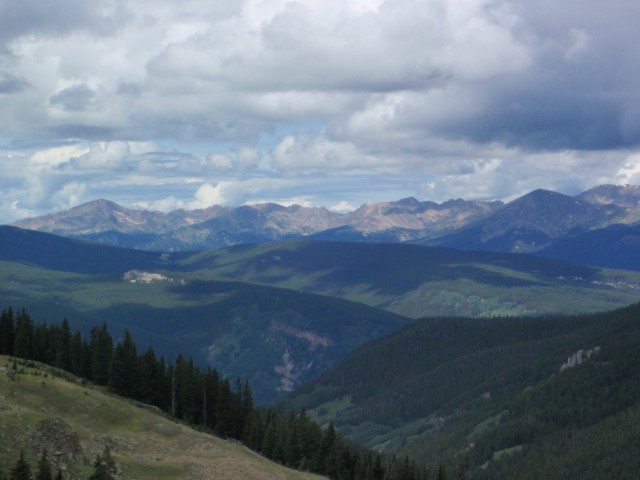
Looking back towards Georgia Pass in the distance. I spent some time in this spot to dry out my tent.
2011
That feeling didn’t last. I became more obsessed almost immediately. I decided that gears must be the answer. And disk brakes. Surely I would move faster if I walked less, so I built up a fully rigid Niner EMD, ordered a new frame bag from Revelate Designs, and bought a new saddle to break in. I chose the EMD because all the cable guides run along the top tube, and that was the best way my bar bag fit while running my cables a little longer. The medium EMD has a much smaller front triangle than an 18” Karate Monkey, but it still weighs less with 27 speeds and aluminum than with 1 and steel.
In the spring, I began to reuse the LW Coaching plan again, a few weeks earlier than 2010. Soon I remembered the intensity of this plan. In 2010 I developed some pretty nasty saddle sores while doing the workouts on my commute. Too much of my life revolved around riding hard (intervals, heart rate zones, etc.), then sitting on a bus for 30 minutes, then riding easy home. I decided that I would do less of this for 2011, opting instead to ride straight home to lift weights and run a couple of days a week. Also, the LW plan didn’t have as much of a draw since I hadn’t just paid for it this time around. Summer went quickly, and I did lots of night riding, relearning how to shift gears and spin (after 2 years of SS, shifting became a burden), and how to deal with disk brakes. It was nice to train with other people (Joe, Brad, and Mark), and sometimes it felt like a little too much fun. Even trying to suffer greatly on some overnight rides, it would not compare to the real thing. Thursday, July 21 was the last day of work. Brad, Joe and I rented a 16 foot moving truck to drive to Durango. It was the only way to rent a vehicle one way, and I would highly recommend it to anyone wanting to ride SW to NE. We arrived in Durango at 3 am and slept in the back of the truck. At 5:45 am we dropped off the keys and rode to the Durango Diner where locals Joey and Sandia met us.
Day 1, the 5 of us rode to the trailhead, 3 of us carrying very heavy loads. Joe had convinced me that we might roll through Silverton after hours, so I brought enough food for 6 days, thinking it would take 4 days to ride from Silverton to Mt. Princeton Hot Springs. Spirits were high, and the scenery was beautiful. Durango has some wonderful trail, and only after a few hours did I realize that any miscalculation would result in a big fall; the lush vegetation masks the extreme drop-offs for the first several miles. Joe, Brad, and I all went over the bars that day in the first 8 miles. Joe is like a cat and nothing happened in his fall. I broke my speedometer, smashed my helmet, and tweaked some cable housing, but was otherwise okay. Brad was not so fortunate and his ride was over on the first day; Joe and I wouldn’t know it for a couple of days.
After making it to Kennebec Pass, the trail got harder. Bushwhacking while still ON the trail was a new experience, and there were plenty of sections where I had to carry the bike on my back. Indian Ridge was certainly a challenge; I’m not sure which direction is easier, for now I’ll say the opposite of the way I went. Joe and I got back down into the trees around 9 pm, where we ended the day.
Day 2: Blackhawk Pass and Rolling Mountain Pass. My plan from summer training had always been to make my oatmeal before going to bed (Mountain High brand) so I could shovel it in as I packed up. Little did I realize the importance of that soaking time. As I crunched through my breakfast, Joe warned me that raw “instant” food can be a real mistake for the digestive system. I heeded his warning and saw how well the food traveled while resealed (not well, in this case, making my backpack a mild sticky mess). There was lots of downhill trail to start this day… one particular bump robbed me of my camera and I didn’t realize it for some time. And, of course, there was lots of uphill, and people. The riding community around Durango looked to be very strong, and the CT Jamboree was going on. Oh, and there were lots of wildflowers, with vibrant colors, in vast fields and shoulder high along the trail. The beginning of my trip on the CT was a 50-hour wildflower experience, punctuated by high mountain passes and patches of snow. In these months since the trip, I remember fewer and fewer details, but I will be forever changed by the scenery in southwestern Colorado. Some mountain passes seemed to move in a straight line, while other sections snaked their way through the San Juans, around certain features, and “that spot” where I knew Kennebec Pass was would afford me that same awesome feeling that I got when I saw how far I’d come in one day. By 9 pm I was again toasted and wanted nothing more than a level spot to sleep.
Day 3: The beginning of the end of the riding partner. Joe and I found ourselves on the pavement at Molas Pass by 7 am, where I got a flat tire. I would end up getting flat tires on days 3, 5, and 7 (and 5 of them on day 7), all related to my rim strips. My rim-doctoring fix gave the rear tire a hop that I couldn’t notice unless I was on pavement, and the descent into town with a line of traffic behind me was less than pleasurable. At least people were cool and let me use my entire lane. Maybe time to go tubeless? In Silverton, I stocked up on more food, packing nearly 25,000 calories on my bike and back. This decision would serve me well over the next 6 days. However, I started having some stomach issues on this Sunday, and they only got worse over the next few days.
Climbing up Stony Pass on a hot day is not recommended. I moved slower and slower, and my power would not return for two more days. The altitude really affected me, but at least there was still a good weather window that would last just long enough. Joe was starting to get on my nerves. He had missed the turn up Stony Pass, rode nearly all of Cinnamon Pass, descended, caught and passed me, and waited (over and over for the next 2 days) at the top of every climb. I was thankful to have him along as a motivator, and he was thankful to have me along as a pacer, but I couldn’t eat enough and needed to rest, and he was concerned about daily milestones for finishing the ride on his schedule. It was a recipe for disaster.
We made it to somewhere in section 23 where I needed to quit early, promising to get up super early for the next day.
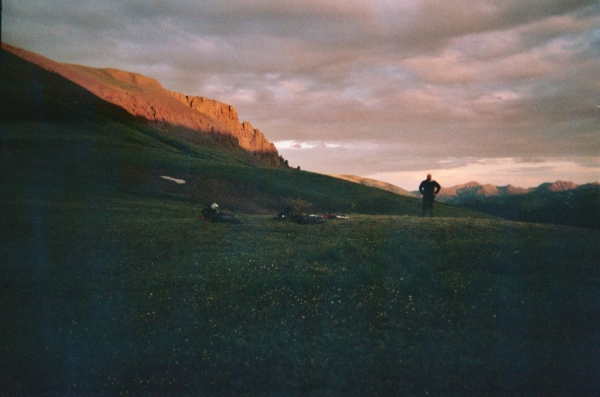
Camped near Half Peak. I believe this was the spot at the bottom of the mandatory dismount for CT racers (that we went up). The tundra here was certainly delicate. Tread lightly.
Day 4: The end. My “super early” start was at 6 a.m. Joe gave me an hour head start and caught me within 20 minutes of his departure. I focused on my breathing (he introduced me to pressure breathing, an invaluable skill I will use in other high altitude adventures) and the views, but mostly wanted to get it over with. A sense of dread for what I’d gotten myself into started to set in. I knew there was a lengthy distance to cover, and light rain began to fall. Seemingly flat fields were full of talus, and descents were over too soon. Joe kept telling me to ride my bike, and my stomach kept telling me to pull over. At last the trees appeared, and all I could think of was stopping. We met the sheepherder that spoke Spanish, and I could have spent the whole afternoon talking to him, but we had to keep moving. Rain started to fall harder, and by the time we reached Spring Creek Pass, I was broken. We made a wrong turn off the highway, down a drainage that lead to nowhere. I filtered water, and told Joe that he needed to go without me. He protested, saying that we needed to ride the entire La Garita detour that night, in the rain. I reminded him that this was an individual time trial and that we were riding under the same rules as the CTR, and that I had two more days to finish than he did. He was concerned about running out of food, and I was concerned about keeping food in my stomach. So he pressed on while I slept in the rain.
Day 5: A new beginning (of sorts). Getting on to the pavement of Slumgullion Pass at 4:30 am, I enjoyed my breakfast of sports drink. At the summit, I had to pull off the road again and it dawned on me: the sports drink! This particular supplement has one of those warning labels about being processed in a facility that processes shellfish. I have a mild shellfish allergy and usually don’t worry about it, but I’d been drinking two of these every day, and combined with heavy physical exertion, my body was rejecting the drink. I knew something was wrong because I was smelling, sweating, and seeing in a lemon lime aura. I would have to stop taking the supplement, even though it was my (perceived) lifeline to long hours spinning in the saddle. If it worked, I would be much better; unfortunately, those drinks constituted around 2,000 calories of my food stash.
LOTS of descending was nice, and the climb up Los Pinos Pass wasn’t too bad (still had some bathroom stops along the way). All I could think about for the whole day was quitting. The good part of riding the CT backwards, I guess, is that you’re so far away from anything that quitting isn’t really an option. I still had plenty of food, and my GI issues would hopefully get better. The ride through section 18 was an absolute blast. Mentally I was starting to pick it up again, I had plenty of power at “low” elevations, and I passed my mileage from 2010. I covered 70 miles that day and made it to section 17. This would be my longest day, 16 hours, and also my day with the most detours. I second guessed myself at so many turns, and looking back on how obvious the trail should have been, it just goes to show that a GPS can certainly make one faster than without.
Day 6: Section 16 is harder than 17… sort of. I met Apple early that morning and chatted with him. I grabbed a little food and made my way back up to higher altitude. After sections 23 and 22, the ten and eleven thousand foot elevations of 17 were no big deal. From reading other CT accounts, I dreaded this section, so I decided to make steady progress and not worry about the details. I counted roughly 5 climbs in the data book and the first 4 went quickly without too much effort. The fifth climb seemed to last for hours. When the descent into section 16 began, I thought I was home free for the day. I had picked a spot to stop after climbing out of Tank Seven Creek, and figured it would take an hour or so to get to. I was wrong. There was a section of trail here that reminded me of that very first day: bike- on- back option only, and at the part of the day when I was mentally winding down. Though this was the only difficult part of section 16, I counted it as an extension of 17 to keep it in the “potentially horrible” category. Two hours later, I found a suitable spot up on the ridge. This was the best day of my trip, partly because my body was again processing food correctly, but mostly because I knew I wouldn’t run out of food. I had been eating 3,500 calories a day for the past four days, and although I was budgeting those bagels and servings of cheese whiz and precooked bacon, I wasn’t starving and had plenty of energy.
There was a massive lightning storm all around me and I thought it might be best to not be at 11,000 feet, but figured I could make better time in the day. The storm was well in the distance, and I would find out later that the Salida and Buena Vista areas had been getting severe rain and lightning for the past couple of days. It never even rained that night. My good fortune on the Colorado Trail was continuing into a second year. Joe told me later that his experience on section 17 had to do with ankle deep hail and lightning; Apple told me that when Joe came through the day before me, he was spinning 90 rpms, red in the face, and missed the turn off the road onto the single track, and didn’t even notice the trail angel as he sped back to the correct spot!
Day 7: Expectations were not met. I thought for sure that I could make it to Buena Vista in one day, but it would turn out not to be true. I slept in and didn’t get on the trail until 9:30 without any regrets. As I neared Marshall Pass, I felt squarely back with the masses. It was a weekday, but there were cars and motos and mountain bikers everywhere, and after the previous day’s experience I prepared myself for more-difficult-than-expected terrain. Before I knew it, I was at the top of Fooses Creek. I exclaimed, “that was easy” and the group that had just finished walking up from the other direction gave me a look. I ate my last sandwich, leaving only candy and cashews to get me through.
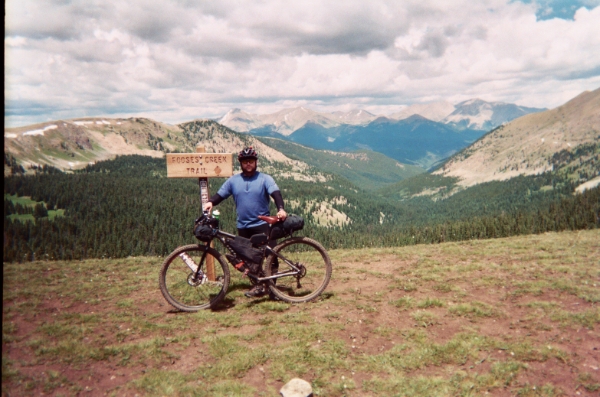
Top of Fooses Creek. Don't get fooled that you are close to Mt. Princeton Hot Springs from here. A faster rider could certainly make it in less than a day, but my individual time trial was turning into a real vacation. Sleeping in, lots of breaks, and still somehow avoiding the torrential rains.
At Chalk Creek, I noticed that my SPOT was out of batteries. No big deal, I would get new ones soon enough. My SPOT stopped working altogether and I eventually had to exchange it for the second time. I have either gotten 2 bad units or SPOT trackers really suck. My third one has been working, so hopefully that continues.
Once I crested the climb out of Chalk Creek, the riding was an absolute blast… for about 10 minutes. My last flat tire had occurred two days prior at a mosquito- infested section of Cochetopa Creek. My makeshift rim strip was looking more and more dilapidated, and the excess tape was making tire changing very difficult. For the next HOUR I tried to so a simple flat fix. I pinched the tube with the tire levers while putting it on twice, and ran out of tubes and patches. After some swearing and grunting, I managed to get everything back together and got some air in the rear tire. I love the Topeak morph pumps, but the mini morph no longer gets my vote; the bigger models are far better for me and worth the bulk and weight. By this time, I had changed the tire 4 times. I rode on with about 20 psi and after 1 descent I knew I should increase the pressure; after all, 20 psi is an ideal amount of air for riding rigid, and I wouldn’t want to be too comfortable. When I took the presta-Schrader adapter off, it took the whole valve core with it! I screwed it back in and counted number 5 that day for the mini morph.
As the day continued, it became evident that I was not going to make it to Buena Vista. In fact, I was still several miles from Mt. Princeton Hot Springs when the sun went down. Clearly this had stopped being a race for me, though I was still putting in lots of effort each day. My decision to start my day 3.5 hours later than normal was coming back to punish me. I found a great little spot and rolled out the gear for the last time.
Day 8: Getting lazier. Though not out of food, I did run out of some other consumables. It turns out that gauze from the 1st aid kit made for a nice substitute. By 11 am I was at the Mt. Princeton Hot Springs county store. After interacting with some grumpy locals, I grabbed more food: chocolate milk never tasted so good! This is when I got the word about the recent local weather patterns. I still had 12 miles of dirt before Cottonwood Pass, and some nasty clouds were developing to the west. I had to make a decision: ride the Colorado Trail (plenty of uphill) through the rain and hopefully make it to the post office by 5 p.m. where I had a mail drop or ride the county road (all downhill) into town. My “race” was over. I was in Buena Vista by 2 p.m. where I promptly got a room at the Super 8. At the post office I ran into John Fettis, someone I recognized from the Tour Divide and CTR discussion threads. He was getting ready for the CTR that coming Monday, and was working out some altitude issues. I spent the rest of the day doing laundry, working on my bike, and eating pizza. It was the first hot meal since the Durango Diner. It was Friday and I had 4 days to finish the trail. One day at a time, I told myself.
Day 9: The final stretch. I was on the railroad grade heading out of town by 5 a.m. The riding was beautiful. There were campers and rafters, cool breezes and a beautiful sunrise, and I hoped to make it to Camp Hale that day. Camp Hale, then Copper Mountain, a likely detour around the 10 Mile range, and a late Monday/early Tuesday finish sounded like a good plan.
But my slowness prevailed. The riding around Independence Pass and Twin Lakes was amazing. I had ditched the backpack, but I wasn’t moving appreciably faster. I made it to the Halfmoon Campground by 3 p.m. and as I rode past all the happy campers relaxing in their spots and telling stories of the 14er they hiked that day, I wanted nothing more than to stop and sit in a camp chair of my own. But I had no camp chair, and no one to tell stories to, plus the campground was full. On the road to Leadville, I was met with a constant stream of vehicles, and I knew approximately how long it would be to Tennessee Pass and beyond. I had some friends that were on call to pick me up in the event of failure. It seemed that at my pace the best I could do was Bailey, plus I had some other troubling issues: my hands felt weak and I worried that I might be causing permanent damage. Plus, I had already ridden those 165 miles the year before. So I called a friend to pick me up in Leadville on Sunday morning, got a room on the edge of town, bought a rotisserie chicken and some beer, and called it a job well done.
2012?
I can safely say that, as of now, completing the entire CTR route in one try is not on my radar. I have some unfinished business outside of Buena Vista, and of course all of the wilderness areas as well. With all of the gear buying, I own 2 complete bikepacking setups, so I can share the experience with others in the future. Getting out there is still what it’s all about, and there are so many possibilities out there that the Colorado Trail will become less of a focus and more of an accessory in the future. However, some have said that folks that don’t finish the trail will be haunted by it for years to come. Time will tell.
Some after thoughts:
The trail was hard on my hands. I couldn’t button my pants or turn the keys in my ignition for weeks afterwards. They have been getting stronger by the day, but it has been a lengthy process and I still can’t open jars. Changing grips from Ruffians to something else might be a good idea.
I ride rigid because of the simplicity, plus I tend to do better on technical trail without so many moving parts, even if I move a little slower. It is also the cheapest way to make the bike lighter. But rigid on the Colorado Trail is a special challenge. I’ve read reports where even front suspension didn’t seem to do much to help with sore hands, and I’ve read other reports where full suspension bikes got completely blown out. One thing I know for sure: section 23 and 22 backwards would have been way more fun with some cushion.
After a lifetime of rim brakes, disk brakes are still a bit annoying. They make funny noises and, at least with mechanicals, contamination was a big issue for me (dirt in the housing). I also had my brakes set up wrong, not allowing for the proper actuation; Joe helped me with that at 8 p.m. on Indian Ridge. I know that much of this is a learning curve, but I also know from working on other people’s bikes that warped rotors are a universal challenge. Either way, make sure your bike is dialed before your trip, and go on at least one outing with 4-6 days of food, and consider packing your bike with wet gear to see if everything still fits.
I commute 100 miles a week and in general do not enjoy bags on my back. All summer I tried different configurations and after I mailed my backpack home from Buena Vista, I thought that things would be smooth sailing. It turned out that I preferred wearing one. My water intake system had been refined in those 8 days, and changing things on the last day didn’t work out for me. On that note, I don’t think I’ve ever packed the same way for two trips, and even within the same trip, things seem to shift around according to immediate needs. I’ve learned to not be too attached to one configuration.
Specialized Captain tires were a great choice for the trail because of their stability and dependability, but are essentially the opposite of the faster-rolling tires I prefer. For the road detours, I hated those big knobs; I would choose the faster tires in the future.
I had everything I needed on this trip, but a second cyclo-computer would have been nice (or maybe a GPS). I even cut out sections from the CT guidebook to bring along, but didn’t need them.
I will put in a plug here for the Geronimo Pain Cream. That stuff is amazing and I had virtually zero saddle sore issues on the ride in 2011.
Finally, I have to thank my amazing wife Lynette for agreeing to my 2011 ride, only 2 weeks before our wedding. The obsession over gear and food, the many overnighters away from home, and the financial commitment would not have been possible without her support.
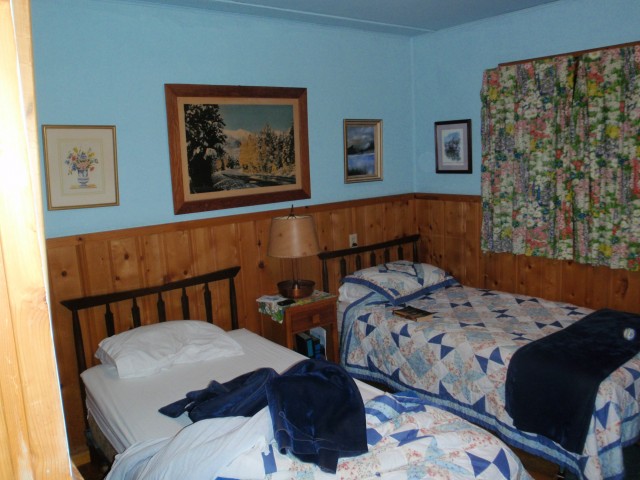
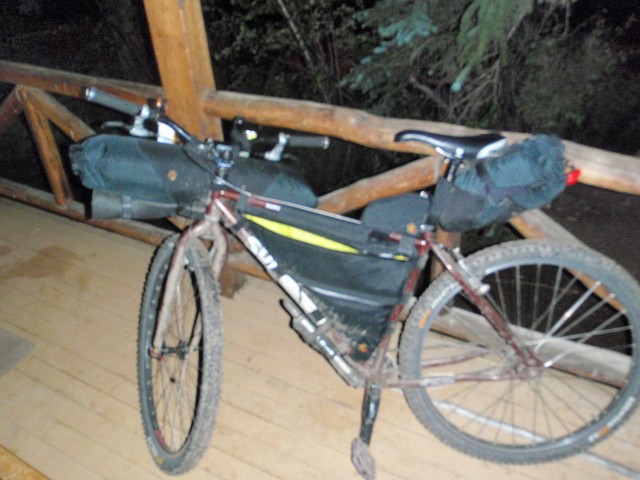
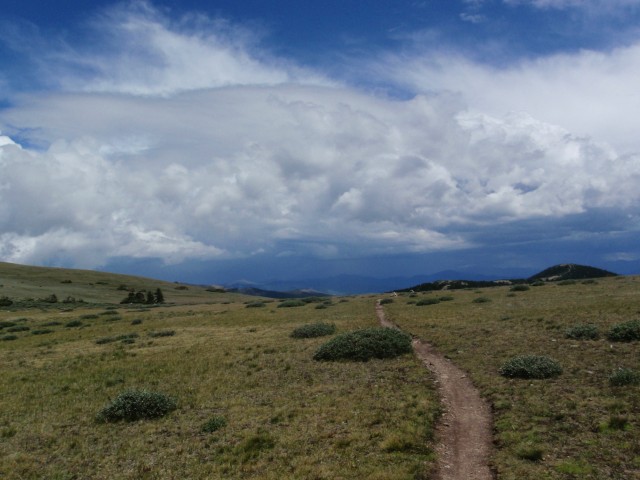
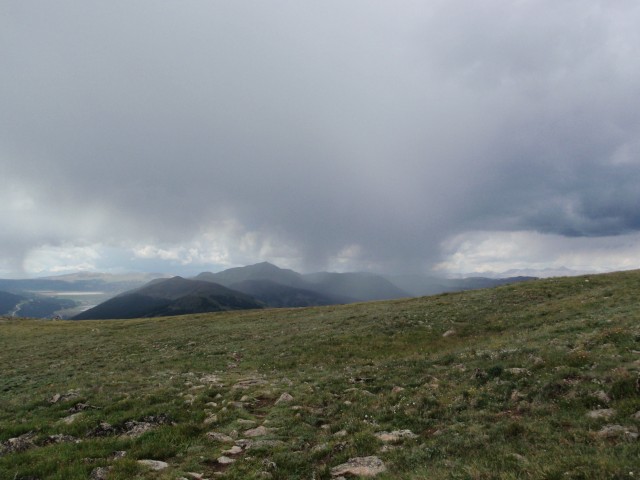
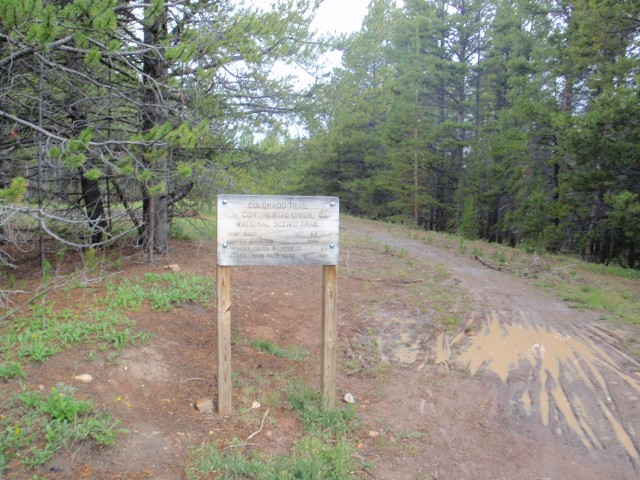

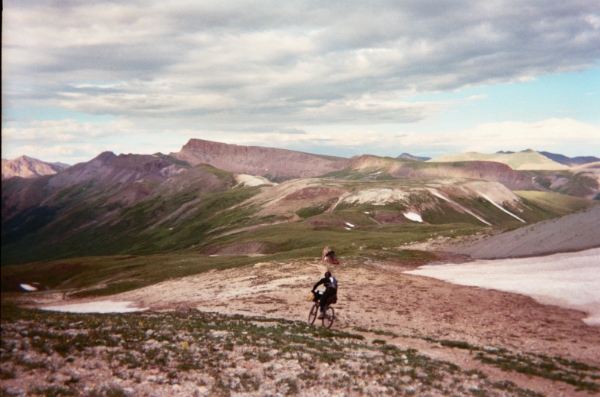
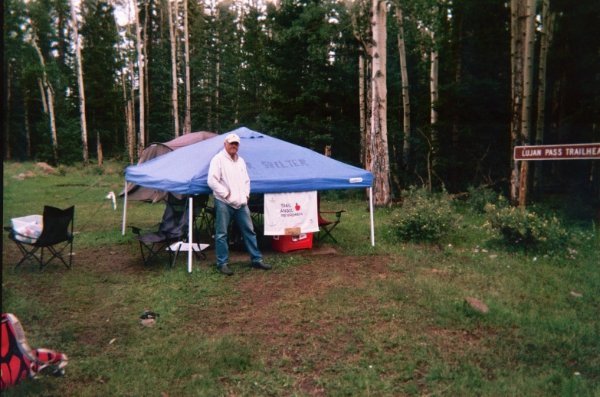
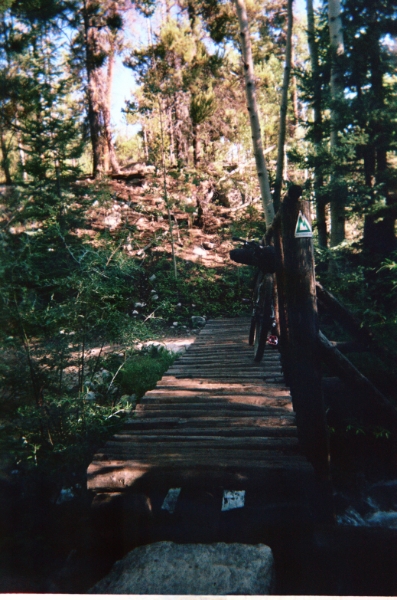
Your passion for the trail and adventure is inspiring. I’m looking forward to crossing paths with you in 2012!
Many of us that frequent this site are mere mortals, like yourself. I too have experienced the epics (almost died from heat exhaustion and dehydration on the Kokopelli) but enjoy riding long miles and testing myself against the trails that a few great riders finish in half the time that I can. The most important thing that i have learned is not to give up on your dreams and aspirations. Learn from your mistakes and your accomplishments on the CTR and ride it again, and again until you finish the damn thing!
Thanks for the detailed writeup. As a 2012 hopeful, I appreciated your last section of post-ride analysis. Crank on!
Great write up. I read through it yesterday and since then, have been spinning some of your experiences around in my head. I admire your ability to refocus your ‘race’ to accomodate your situation and still continue to make a great trip out of the CT instead of quiting to soon. Your comments on the continually evolving gear selection were similar to mine. I too have over-packed and underpacked, learned from the good and bad experirences and still hope for success each time. Anyway, thanks for the stoke.
Thanks for all the comments, folks. Dangerous thing about declaring no desire to do something: it creeps back to haunt you eventually. Looking forward to many overnighters this summer, and my first mtb ride this spring is just around the corner.
Thx for the write-up… I tried the CT in Aug 2011, Denver to Durango and made it to Silverton in 10 days. Certainly the hardest part was the mental challenge. Your statement about mood swings from “this is the greatest thing” to ” why would anyone do this” certainly applied to my experience. I remember planning my trip and searching for accounts like yours, they are very helpful.